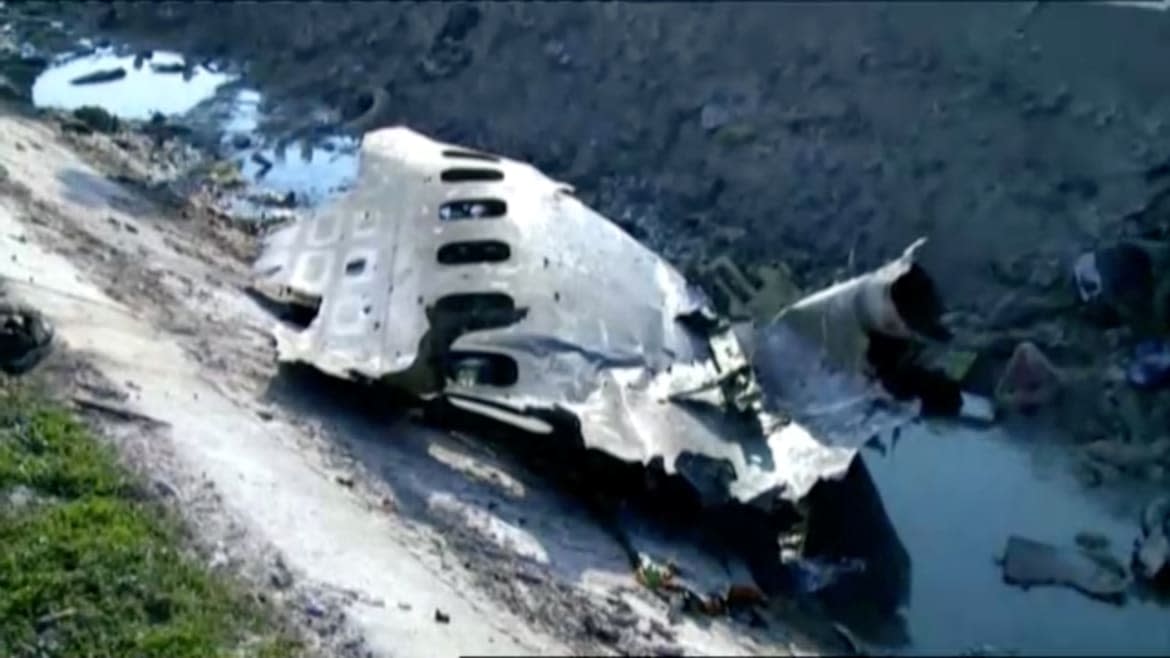Ukrainian Plane Crash in Iran Raises Issue of Flaw in Another 737 Model

The crash of a Ukrainian International Airlines flight 10 minutes after it took off from Tehran, killing 176 people, raises questions about a known safety issue with the model of the Boeing 737 involved—not the grounded 737-MAX but the previous NG, or Next Generation, model.
There has been no official finding of the cause of the crash—whether it was shot down or was doomed by mechanical failure or pilot error. Iran pointed to a technical malfunction, but Ukraine suggested it was looking at all scenarios.
It is unusual for a crash like this to occur so suddenly during the climb out from an airport without the pilot being able to send a Mayday distress call.
This could indicate the likelihood of a sudden and catastrophic failure overtaking the flight so completely that the pilots had no chance to respond.
63 Canadians Were on Board a Ukrainian Passenger Plane That Crashed Leaving Iran
Investigators are sure to give priority to considering if this is a kind of failure that has previously occurred on the 737-800 NG model involved. In doing so, their attention will focus on Southwest Airlines Flight 1380 in 2018, when a sudden and catastrophic failure of an engine fan blade crippled a 737 so badly that only the nerve and skill of its pilot, Tammie Jo Shults, saved it from disaster.
After investigating this incident, the National Transportation Safety Board last November pinpointed a flaw in the engine casing of this model of the 737 that made it possible for a failing engine fan blade to become like shrapnel from a missile that tears into the fuselage of the airplane.
Boeing responded to the NTSB alert by saying that no airplanes needed to be grounded while the problem was fixed. It said:
“All 737 NGs are safe to continue operating normally as the issue is completely mitigated by the fan blade inspections. In addition, Boeing is working on the design enhancements to fully address the safety recommendation from the NTSB. Once approved by the FAA, that design change will be implemented in the existing NG fleet over the longer term. This issue is limited to the 737 NG and does not affect the 737 MAX.”
Engine casings are supposed to be designed to contain shrapnel from a failure, but the NTSB’s November warning challenged Boeing’s assertion that in this case regular engine inspections “mitigated” the problem. It pointed out that the failure on the Southwest 737 exposed a weakness that had not shown up in the original tests when the FAA certified the design as safe.
The chairman of the NTSB, Robert Sumwalt, wrote, “It is important to go beyond routine examination of the fan blades; the structural integrity of the engine nacelle components for various airframe and engine combinations needs to be ensured.”
The board issued five new safety recommendations to the FAA that it said required action. The engines are jointly manufactured by General Electric and a French company, Safran, but the design of the engine casing is the responsibility of Boeing.
The failure that hit Flight 1380 occurred at 30,000 feet as the flight reached cruise height. The Ukrainian 737 that crashed in Iran was at around 8,000 feet when disaster struck. There are two possibilities for an engine failure related to that altitude: The engines were stressed at maximum power for the climb, or there could have been a bird strike.
Boeing has not commented on the possible cause of the disaster. In a tweet overnight, it said it had seen media reports and was gathering more information. Early Wednesday morning, it tweeted, “This is a tragic event and our heartfelt thoughts are with the crew, passengers, and their families. We are in contact with our airline customer and stand by them in this difficult time. We are ready to assist in any way needed.”
Iranian officials said that the airplane’s black box has been found and, if intact, this should provide enough data to establish what did cause the crash. It is likely that the Iranians will call on help from European investigators, most likely from France, to help analyze the data.
Boeing said, “We are aware of media reports out of Iran and we are gathering more information.”
There are more than 5,000 Boeing 737-800 NGs in airline service around the world.
Get our top stories in your inbox every day. Sign up now!
Daily Beast Membership: Beast Inside goes deeper on the stories that matter to you. Learn more.

